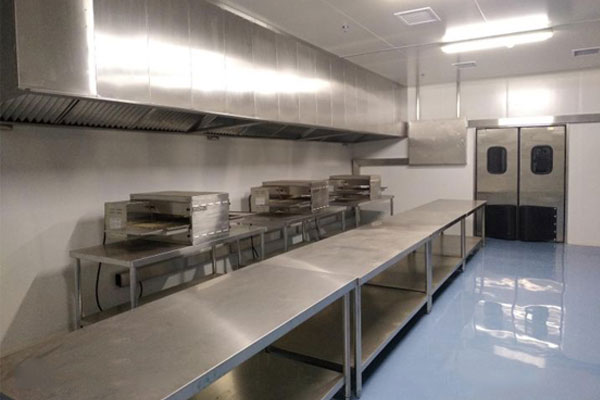What are the benefits of a central kitchen?
1. Large-scale cost reduction: This benefit is obvious. When the decentralized branch stores purchase their own privileges, the advantages of the centralized kitchen are reflected. The increase in the procurement scale brought about by centralized procurement improves the bargaining power and upstream procurement. The quality of the products has improved, the price has dropped, and the supply has become more stable.
2. Reduce labor costs: The catering industry is closely related to our lives. We understand this more clearly than other industries. For example, the salary level of chefs is 2 to 3 times higher than that of ordinary waiters, and the average monthly salary is between 5,000 and Between 10,000, the bargaining power of individual experienced chefs may be higher than this level. Then there is the unified workshop processing of the production process in the central kitchen, which reduces the washing, cutting, and matching procedures in the back kitchen, thereby reducing personnel allocation and labor costs.
3. Reduced store rental area: One of the factors that restricts the development of the restaurant industry is the dining space area of the restaurant. According to statistics, the birth of the central kitchen can reduce the area of the back kitchen by up to 60%, thus greatly expanding the dining area of the front hall. Thereby increasing the flow of customers and bringing about a direct increase in sales profits.
4. Product standardization, reducing the dependence on human experience, can accelerate the update and iteration of products: the central kitchen unifies the processing and production of raw materials, thereby reducing the impact of restaurant chain stores on product quality. The innovative “hand workshop” that relied on the personal experience of the chefs in the past will be replaced. After standardization, the team can adapt to the changing malpractice needs faster and more efficiently, so as to introduce new products and accelerate the iterative update of products.
5. Integration of warehouse storage and distribution, thereby reducing the cost of equipment purchase and material transportation: After the integration of warehouse storage and distribution, the purchase of refrigerating equipment for catering and food materials storage in many branches has been reduced, equipment has been reduced, and power consumption has also been reduced, thus serving multiple purposes with one stone. , reduce costs. At the same time, integration can also reduce the transportation cost and the cost of food waste caused by third-party distribution.
What are the disadvantages of a central kitchen
1. The required area is large, the equipment is large, the capital is large, and the initial investment is large.
2. The pressure of traffic will delay the time of transportation, especially in the case of serious traffic jams in first-tier cities, which cannot be delivered in time.
Product Video:  Follow us on Facebook
Follow us on Facebook 
Product Category
| >Cooking Equipment | >Refrigeration Equipment | >Bakery Equipment | >Food Processing Equipment | >S.S. Furniture
| >Food Display Equipment | >Snack equipment | > | >Furniture | >Small Wares

